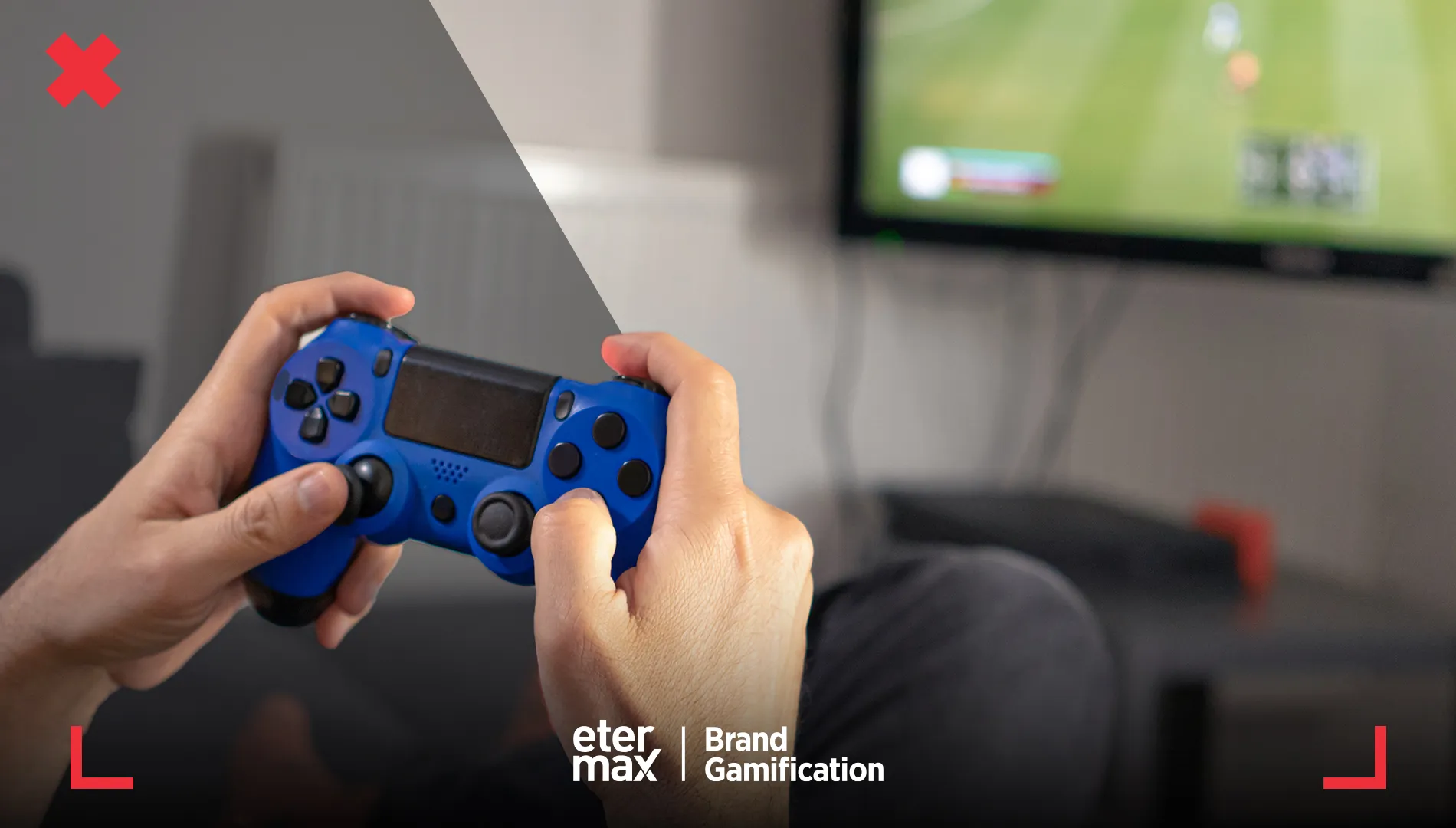Strictly speaking, World Cup mania lasts for a month, but we all know the passion for the event awakens long before. At etermax Brand Gamification™ we wish to celebrate this event, and remember why the relationship between video games and soccer is well established and continues to evolve.
Genesis and history of a bond
The FIFA World Cup is, aside from the Olympic Games, the most watched sports event worldwide. The 2018 FIFA World Cup in Russia had over 3.500 billion spectators; not a minor detail considering the world population that year reached 7.600 billion people. Precisely, almost half of the world follows the event and is affected by soccer mania.
As early as the 1970s, versions of Pong attempting to represent sports appeared. But it was in 1979 that the first soccer video game was created: North American Soccer League, developed for Intellivision. Strangely, the first ever soccer video game was born in a country not so strongly related to this sport — the United States, of course.
The first great revolution of the genre took place in 1989 with Kick off for the Atari ST and Commodore Amiga. Four years later came the legendary FIFA International Soccer, developed by EA Sports for Sega Megadrive. From then on, the history of video games was never the same.
The launch of Konami’s International Superstar Soccer in 1994 gave rise to what would later become one of the biggest rivalries in video games: Pro Evolution Soccer games (originally International Superstar Soccer) vs. EA Sports’ FIFA games. From then on, the soccer video game market, mostly in consoles, has been dominated by this rivalry between EA and Konami. However, the recent split between EA and FIFA together with Konami’s decision to make eFootball free-to-play make us wonder how this ecosystem will be reconfigured in the future.
Soccer video games have evolved greatly over time, and have won the audience’s hearts little by little. Everyone can be the main character, and everyone is welcome in the Gaming world. For instance, Mia Hamm Soccer 64, a video game dedicated to the Women’s Soccer League of the United States, was available on Nintendo 64 as early as the year 2000.
The new sports
Nowadays, there are new spaces in the industry: streaming and esports. During the toughest period of the pandemic, many leagues turned to video games and streaming as means to offer content to their fans. For instance, the eLiga MX, an esports tournament endorsed by the Mexican soccer league that pits 18 of the main teams of the country against each other, was created in Mexico. Similarly, other countries have begun to take esports very seriously: the UK has a country-wide esports regulating body.
FIFA has acknowledged the importance and position of video games for a while now. The FIFA Interactive World Cup, an esports soccer tournament now known as FIFAe, kicked off in 2004. This acknowledgement comes as no surprise, given that the industry of video games is growing by the minute: according to the consulting agency Newzoo, revenue from esports will reach a total of 1.384 billion dollars worldwide in 2022.
What does this mean for brands, then? Can they enter this world?
They sure can
Many advertisers have begun to participate in esports tournaments, and find links between soccer and video games. Gaming events are great opportunities: in 2019, Estée Lauder sponsored the League of Legends Invictus team, while L’Oreal organized an event with the QGhappy esports team and the streamer Feng Timo in China. To this day, Feng and QGhappy’s followers visit the brand’s social media to watch the video of the event.
A campaign closer to the soccer world was Burger King’s Stevenage Challenge with David Madrid. The brand ‘hacked’ the FIFA 20 game and began to sponsor Stevenage, a team at the bottom of England’s fourth division. With its logo on the team’s official shirt, Burger King was front-and-center in the video game, and encouraged gamers through social media to share their goals scored with legends like Messi and Ronaldo wearing the unknown team’s shirt. More than 25,000 goals were shared online, and Stevenage became the most used team in career mode.
Brands can even sponsor players or teams: Red Bull partnered with the streamer Ninja to release cans with his face on them, and Movistar has its own esports team, the Movistar Riders.
Another example of a disruptive action is the women’s soccer tournament sponsored by Turtle Beach the etermax Brand Gamification™ team helped organize in Brazil. Is there anything better for a brand than to lead a tournament with an innovative proposal? Even if it is common knowledge that we all play, there still are preconceptions about the gamer audience, and actions like this help demystify those ideas while empowering women who want to participate more actively in esports.
Another case that’s also related to soccer and illustrates just how flexible streaming is is what we did with Amazon Prime for the launch of the series Maradona: Blessed Dream. Streamer Gero Momo invited his followers to participate in a trivia show where they competed for Amazon Prime prizes. This way, soccer and Gaming found a new connecting point.
Gaming is full of opportunities for brands, and its history with soccer proves it. The industry is in constant evolution: there are new tools each day so that organizations can create powerful bonds with people. All that is left to do is to seize them.
